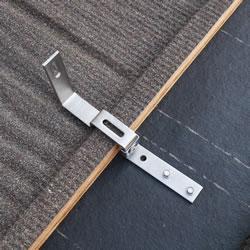The eco-sheet shows that there is no silver bullet solution. When looking at CO2 emissions only, it would be clear what options to take. However, this is not the only environmental consideration. Not preferring any particular method of electricity generation, the eco-sheet lists the main environmental impact categories and benchmarks them against the electricity generation mixes for the EU 25 and EU 15.
ECO-SHEET COMPARES ENERGY SOURCES
Sergio Ferreira | European Copper Institute
| The eco-sheet shows that there is no silver bullet solution. When looking at CO2 emissions only, it would be clear what options to take. However, this is not the only environmental consideration. Not preferring any particular method of electricity generation, the eco-sheet lists the main environmental impact categories and benchmarks them against the electricity generation mixes for the EU 25 and EU 15. |
|
By Sergio Ferreira, European Copper Institute |
|
This eco-sheet has been produced by Leonardo ENERGY in the context of its project 'Efficiency and Ecodesign'. It aims to quantify the environmental impact from generating 1kWh of electricity using different energy sources.
A well-diversified generation mix is essential to address challenges such as energy security and economic efficiency, with some energy sources having a much higher environmental burden than others. The eco-sheet shows that there is no silver bullet solution. When looking at CO2 emissions only, it would be clear what options to take. However, this is not the only environmental consideration. Not preferring any particular method of electricity generation, the eco-sheet lists the main environmental impact categories (according to the Apeldoorn declaration [Apeldoorn, 2003]) and benchmarks them against the electricity generation mixes for the EU 25 and EU 15. Product description and typical application The product of this eco-sheet is a kWh of electricity, delivered to a customer. Electricity is consumed in homes, office buildings, industry and transport for the purposes of lighting, appliances, driving motors, heating buildings and powering electronics. Scope of the LCA The declared units for the LCA are the production, utilization and recycling phases. All LCA data were taken from the GaBi4 database. The modelling and the inventory data (specifically regarding data quality aspects) were performed in accordance with ISO 14040 series as far as applicable. The modelling leading to the environmental burden of a kWh consumed takes into account fuel extraction, transport and refining (where applicable), the construction of the power plant and the losses in the electricity transmission and distribution system.
The average value of the losses in the electricity networks in Europe was used: 7,89% [IEA Statistics]. These 7 generation technologies were also compared against the EU 25 and EU 15 electricity mixes, using the following data [IEA Statistics].
Results Inventory The table below compiles the results obtained from the LCA modelling of the 7 different technologies and for the EU 25 and EU 15 generation mixes. The results are expressed on the amounts of CO2, NOx and SO2 emissions, and the weights on the ‘Big 6’ Impact Categories (Primary Energy Consumption, Acidification Potential, Eutrophication Potential, Global Warming Potential, Ozone Layer Depletion Potential and Photochemical Ozone Creation Potential [Apeldoorn, 2003]). Further information on the environmental implications of electricity generation could be achieved by looking at other impact categories as for example the eco-toxicity potential or water use. However, these would refer to more local impacts and can be better addressed by a Risk Assessment study on a case by case basis.
Impact results The following series of charts provides a simple graphic illustration of the results obtained, comparing the production of 1 kWh from different sources.
Here is a link to download the PDF of the eco-sheet
And a link to our page with other ecosheets:
References [GABI] The respective tools and models have been provided by PE Europe, Hauptstrasse 111-113, D-70771 Leinfelden-Echterdingen (Stuttgart), Germany, www.gabi-software.com [Toolbox, 2005] The original information of this environmental declaration sheet is taken from the results of the GaBi 4 i-Report referring to the ecodesign toolbox 2005 (for information, contact Sergio Ferreira, email saf@eurocopper.org ) [IEA Statistics] www.iea.org, 2004 [Apeldoorn, 2003] Improvement of LCA characterization factors and LCA practice for metals |
||||||||||||||||||||||||||||
The content & opinions in this article are the author’s and do not necessarily represent the views of AltEnergyMag
Comments (0)
This post does not have any comments. Be the first to leave a comment below.
Featured Product










